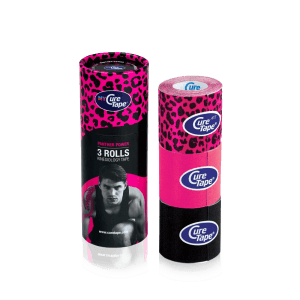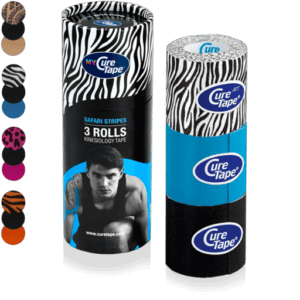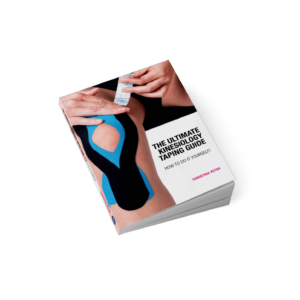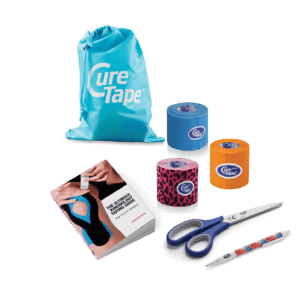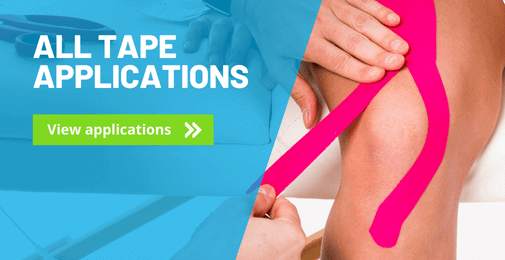In this drainage technique, unlike other lymphatic tapes, modified I-tapes are used. They are applied “spirally” in the opposite direction, thus exerting a greater influence on the lymphatic system and reducing swelling. At the same time, the tissue is mobilised in a gentle manner. This tape application is ideal for a whiplash, for example, where a muscle tear causes swelling. In the event of a muscle tear, it is advisable to first consult a professional such as a physiotherapist or general practitioner for treatment. In any case, you can positively influence your recovery process with this taping technique. By taping, the muscle is gently mobilised, blood circulation improves, and pain subsides. After application, you should try to put very little pressure on the muscle (within the pain threshold). In addition, the tape is effective in counteracting muscle stiffness or cramp in the calf.
How to tape painful calves
Tips for a good calves taping application:
- Is the cause of the complaint or pain clear?
- Check if there any contraindications for not taping.
- Before you start taping, carefully read the instructions.
- Choose a colour of tape, any colour that fits your mood!
- Round of all the edges to prevent peeling.
- Do not stretch the tape at the beginning and the end.
- Rub the tape well for adhesion. Heat activates the adhesive layer.
- Showering or swimming is possible, pat the tape dry after it gets wet. Do not rub it hard.
- It is easier to remove the tape with body or massage oil.

Christina’s advice when taping your calves
In the self-taping instructions, I have chosen taping applications that are easy to apply yourself. In order to make this treatment safe, I give practical tips, which you should take into account before, during and after a tape treatment. They are based on my years of practical experience. If the complaints persist, always consult a therapist or doctor.
Instructions
Tape
Shape:I-Tape, 2,5 cm width.
Number of strips: 3.
Technique: drainage technique (without stretching).
Measuring and cutting the tape
Step 1:
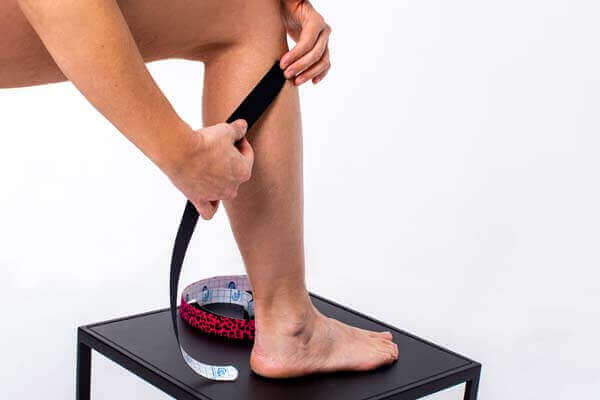
- Measure the length of the tape from below the hollow of the knee to the foot in a spiral motion around the lower leg.
- Cut the tape to width (half 5 cm to 2.5 cm).
Applying the tape
Step 1:
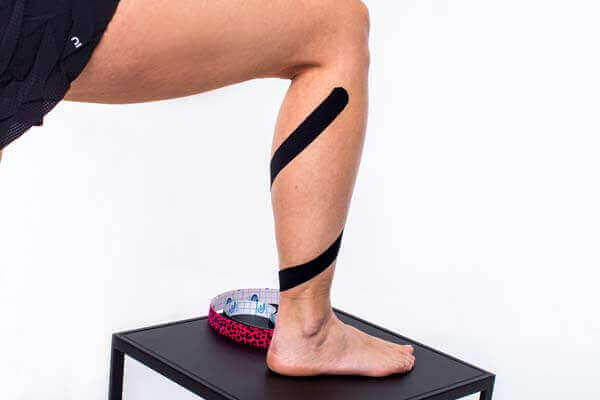
Step 2:
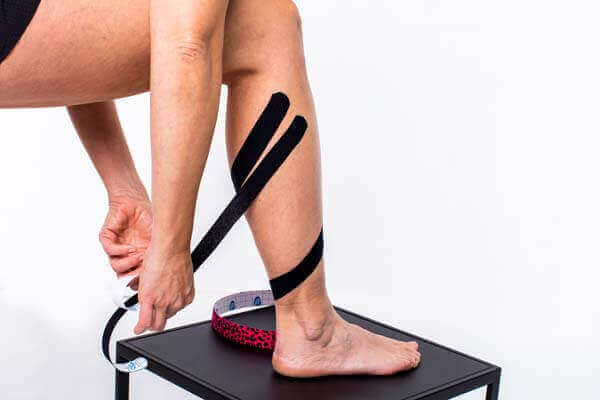
Step 3:
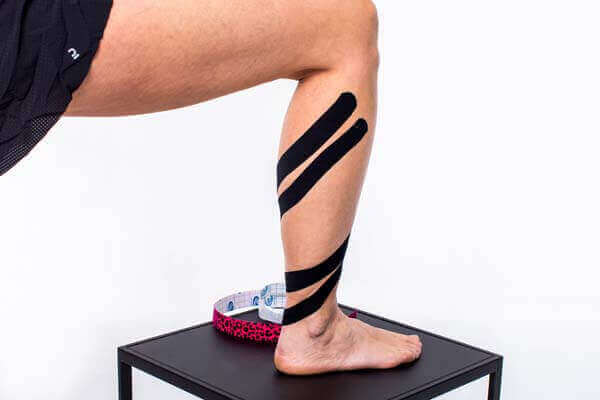
Step 4:
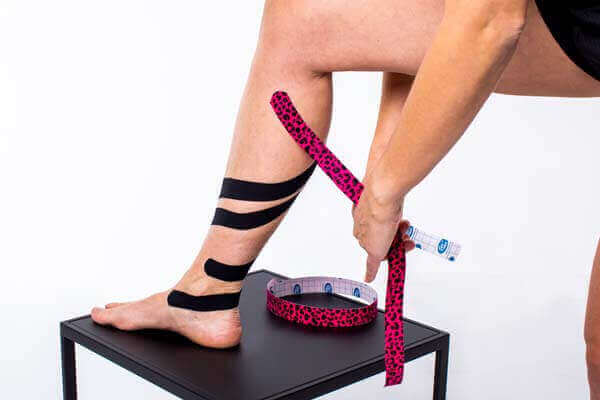
Step 5:
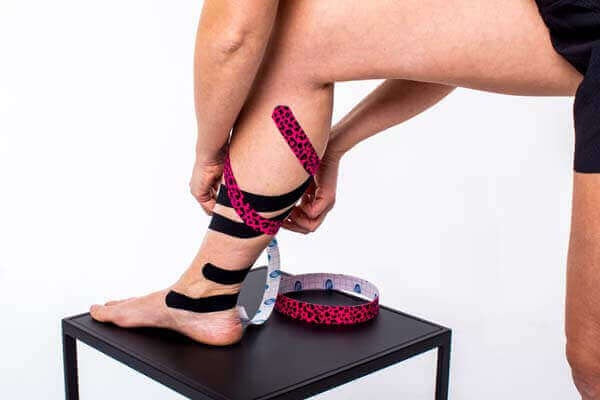
Step 6:
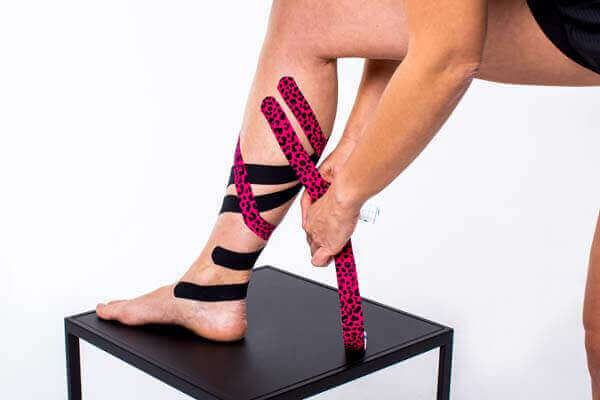
Step 7:
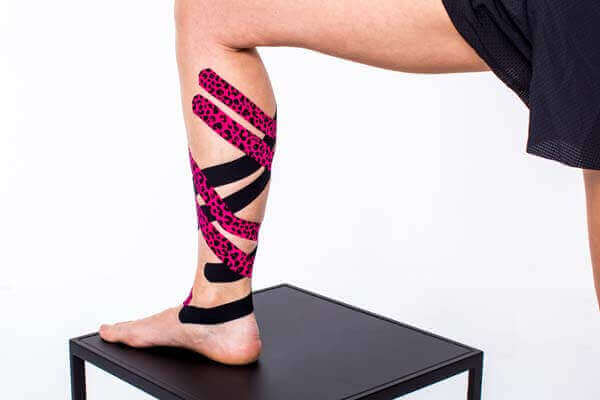
Step 8:
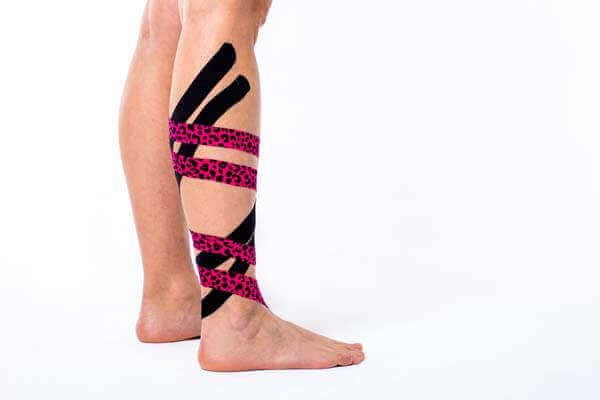
- Place the base of the first tape on the outside of the lower leg, and apply without stretching.
- Apply the tape in a completely tension-free spiral motion around the lower leg to the ankle. The anchor is located at the back of the foot.
- Place the base of the second tape also without tension. The anchor starts slightly offset under the first tape, and spirals to the ankle. The anchor is located at the back of the foot.
- Place the second tape around the inner muscle belly edge of the calf in the same way.
- Apply the base of the third tape without stretching, and in the opposite direction of tapes one and two, to the inside of the lower leg. The tape runs in a spiral form and without stretching to the ankle. The anchor ends at the back of the foot (inside)
- Gently rub the tapes together.
Learn how to tape
- 30 taping instructions for common injuries that taping can help you with
- 176 pages of clear written instructions
- 200 step-by-step instructions accompanied by photo’s, illustrations and scannable video’s through QR codes
What are you waiting for? Order your copy today!
*This book is intended for people who want to tape an injury or complaint themselves. If uncertain about the complaint, consult a physiotherapist.
THYSOL is the manufacturer of the kinesiology tape brand CureTape. As CureTape, we have been training and supplying professionals for almost 25 years. And consumers now know how to find us too! By manufacturing all our tapes in our own factory, we can guarantee the best quality!
Please note that the indicated tape applications and information on our website about the possibilities with kinesiology tape have not yet been scientifically proven. The statements and examples mentioned are based on long-term experiences of patients and trained therapists.
Contraindications not to tape: pregnancy, open wounds, broken bones, unexplained complaints, allergies and skin diseases, use of medication such as blood thinners, thrombosis and fever. Always apply tape in consultation with a specialist.

